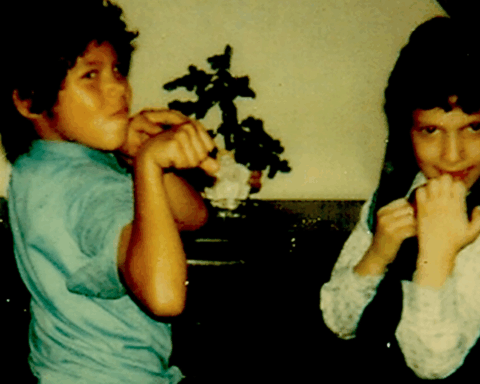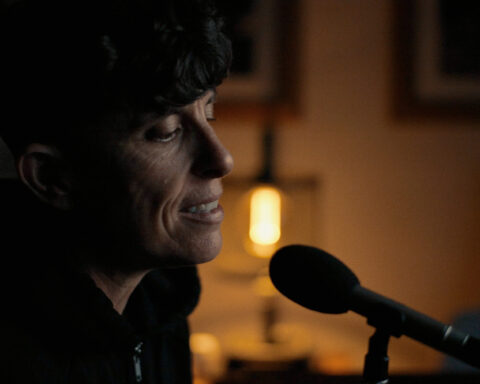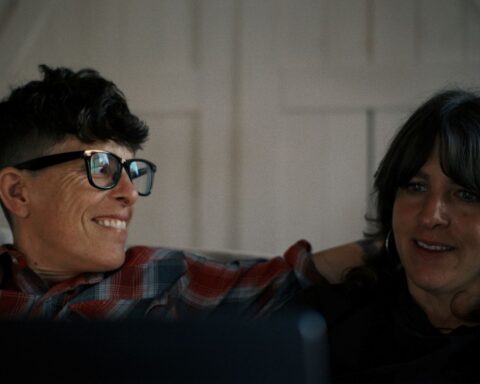To those who fly over it, Winnipeg, the city of my birth, is a small charcoal smudge of a populace upon the great white Canadian plains of snow, a city too easily overlooked, or forgotten completely. To me, Winnipeg is a supernatural city of enchanted palimpsests, stories and memories piled on top of one another. Some of these narratives have been completely covered up by the new histories written over top of them; other stories bleed through and persist in being legible at all times. The narratives mix and mingle with all eras and confuse us Winnipeggers, we who can never quite remember what year it is at any given time. Especially in wintertime, when the heavy load of darkness and fog confounds us most, and we spend much of our waking time dreaming, and in our dreams we forget the cold, forget our sadness and losses. The hoary, sparkling darkness — darkness strangely white with vast avenues and vaults of snow — is a great anesthetic, an intoxicant even. Our streets are full of drowsy and forgetful wanderers positively drunk on sleep, and the city is divided into the two worlds, almost indistinguishable, of the sleeping and the barely awake.
During our nightly peregrinations, we citizens visit the cityscapes of both worlds. And the people and buildings that were once here but are now gone are allowed to coexist with those that are here still. We remember equally what happened today and long ago. Buildings long razed seem to reappear; our cemeteries seem to have an unstable population which rises and falls each night. As a result of our temporal discombobulation, Winnipeg is perhaps the most nostalgic city in the world, without even realizing it, for we are actually living in each moment — in the past, present and maybe even the future — without it ever feeling like anything other than right now. We are each, sleepily, just a few gently inter- connected urban narratives, some of them involving me and some of them involving past or present characters, all of us treated as if we exist simultaneously in a kind of haunted space where all times happen simultaneously. (Did I say that already?) Winnipeg is also one of the most liberal-minded cities in the world, probably because of its tendency to openly accept all these public sleepers and dreamers.
The architecture of our city and the arrangement of its streets seem to acknowledge the various levels of consciousness which a healthy mind needs to function with any sort of civic responsibility. Take for instance, our Sherbrook Pool, at which I am a volunteer life- saving instructor. This grand old pool was built as a make-work project during the Depression. It is extremely dark and musty, still exhaling the gritty, sooty breath of the Dust Bowl years. It’s also the only public pool in the world to be built on three subterranean levels, with a separate swimming tank on each level, like an underground parking lot, but with swimming instead of parking at various depths. On the first level, the one closest to our streets, swimming is co-ed. One floor down, only girls swim in the pool, and on the deepest level, only the boys. I teach a class to the kids at the co-ed level — the giggling adolescents practice mouth-to-mouth resuscitation on each other. On the middle level, it is I who demonstrates the proper technique on the eager young girls who feign their drownings for me at poolside. On the deepest level, where no sun ever ricochets, I impart my life-giving breath exclusively to young boys. These three pools and the changing rooms for each also serve as air raid shelters during our frequent civic safety drills in downtown Winnipeg. There is no real need for these drills any longer, but having forgotten why we had them in the first place, we Winnipeggers keep them up, partially to honour our rote way of life, partly just to err on the safe side.
Winnipeg, rote and film: There is a therapy of rote built into the process of making a film — a therapy that works all too well at curing you of your obsessions whether you want the cure or not. I noticed this phenomenon years ago. I would choose a subject I loved and decide to make a picture about it. And no matter how much I loved my subject, whether it was the Great War, mountains or Icelandic folk lore, I would, without fail, fall so far out of love with it by the end of the project that the mere mention of anything to do with this once all-absorbing area of study would produce dry heaves of revulsion in me. By the simple means of turning my beloved subject into just so much footage that needed to be edited, sound-mixed, colour-balanced, premiered and promoted, I would suck all the flavour and fantasy out of what was once so tasty to me. In recent years, I have really strayed into dangerous territory by making films about my most cherished possessions — my own enchanted childhood, my family, my libido — and in each case I emerged without any interest in ever thinking about these things again. I never “worked through” any problems concerning these huge psychological prominences, I merely buried everything in a deep avalanche of ennui. The long, lugubrious and outright rote process of filmmaking did this for me, to me.
And now that I have just completed a documentary about the city in which I have lived for my entire life, Winnipeg, I realize that I have just made myself homeless. It won’t ever matter whether or not I free myself from the powerful spell of time-shifting under which we Winnipeggers must live; it won’t matter to me how confused I might be over how old I am or what decade this is; it won’t matter whether the city’s residents disown me after the movie plays within their environs; all this, simply because I don’t care any longer. I never thought I meant for this to happen, but knowing as I do the effacing strength of rote therapy, I wonder if I intended at some deepest level to sever my connection with this place once and for all.
Perhaps now I can go live somewhere less benighted, less charged with mysticism, less addled. Now I take my first steps away from here. I’m finished with the Winnipeg of my past and yet know not where to go next. In my bored heart of bored hearts, something is telling me to wait till winter to depart so that I can retrace my footsteps in the snow back to my old dreamy city in case I find I can’t sleep in my new home. And so wait until winter I shall, for I am still a Winnipegger and, as such, my instincts about sleep are always right.











